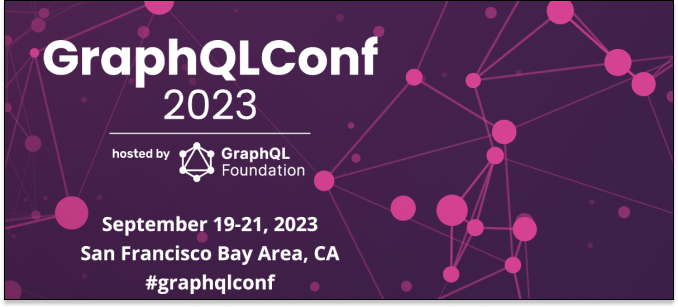Articles
The NATS extension enables you to publish and subscribe to NATS subjects directly from your GraphQL API, and lets you use the key-value store to store and retrieve data.
This article reflects Benjie's opinions on the past and the future of Nullability in GraphQL; but note that these are merely opinions.
Articles
GraphQL Federation has historically been constrained by the complexities of managing subgraphs, custom integrations, and infrastructure overhead. While existing solutions provide ways to unify GraphQL APIs, they still require significant operational effort. Until now. We’re excited to introduce Grafbase Extensions, a powerful new way to customize and enhance your GraphQL APIs without the hassle of building and maintaining additional infrastructure. With WebAssembly-powered extensions, you can federate any API, database, or service into your GraphQL schema, whether it’s REST, gRPC, or Kafka. With Extensions, you can bring in any authentication (e.g. OpenID connect) or custom authorization logic directly into the gateway.
Explore the evolution of GraphQL, from overcoming monolithic graphs to enhancing developer experience and boosting performance.
While organizations have long sought to integrate REST APIs with GraphQL, the process of separately integrating each API has remained a widespread and persistent pain point.
Articles
Is GraphQL right for your project? Amazon's Vignesh Kamath reveals when this query language shines, when it fails, and how tech giants like Netflix and PayPal use it effectively in production.
Articles
Declaratively integrate REST APIs into GraphQL schemas. Transform responses, parallelize calls, and handle auth with minimal configuration. Ship products faster with graph-based orchestration - no need to convert everything to GraphQL. Try it today!
Declaratively integrate REST APIs into GraphQL. Transform responses, parallelize calls, handle auth. Ship products faster with graph orchestration. Try it free today!
Articles
Learn how Apollo Connectors simplify API orchestration by identifying and connecting entities in REST APIs. Practical examples show patterns for efficient GraphQL-REST integration without writing BFF code.
Learn the secrets of crafting winning conference proposals from Donna Zhou, a GraphQL Java maintainer. Her step-by-step guide shares proven strategies and a real proposal example from GraphQLConf 2023.
Articles
The Technical Steering Committee welcomes Martin Bonnin (Apollo) and Pascal Senn (ChilliCream) as new members, alongside the re-election of Kewei Qu (Meta), Rob Richard (1stDibs), and Uri Goldshtein (The Guild).
Articles
Join Apollo’s CTO and Head of Developer Relations on February 19th for an exclusive look at Apollo’s new and advanced innovations. Through interactive learnings and demos, you’ll learn how your team can leverage these groundbreaking features to transform hours of API orchestration work into just minutes, while advancing development speed, execution quality and API fidelity.
Articles
Seven reasons why you should generate your client types based on your query documents—not your schema.
JUCR Co-founder and CTO Max Grollmann shares his take on how embracing GraphQL and Apollo GraphQL's tools has helped him improve latency, efficiency, and the overall user experience that has set a new industry standard for creating a scalable framework in the growing EV market
Learn how to set up GraphQL APIs with built-in query generation, relationship management, and flexible filtering in this comprehensive guide
Articles
GraphQL servers must support the new application/graphql-response+json content type. This seemingly small update solves a long-standing pain point in error handling, allowing clearer distinction between GraphQL and non-GraphQL server responses. Learn why this matters for your production apps and how it puts an end to the "everything is 200 OK" memes.
Articles
Marc-Andre Giroux shares practical insights on when to share types and when to duplicate them, challenging common GraphQL schema design patterns with real-world examples.
An interview with Pete Crocker from OpsMill breaks down why companies are moving from REST to GraphQL, covering real-world advantages, key technical differences, and ideal use cases for modern API development.
Gato GraphQL now allows sending structure data in our prompts to ChatGPT. This is useful to have ChatGPT process multiple pieces of data from the DB at once, such as when translating content.
Hasura is excited to announce that Hasura Data Delivery Network (DDN) now offers GraphQL subscriptions, making it easy for developers to build real-time features into their applications. Simply connect to your data sources to instantly provision an API with default GraphQL subscriptions enabled on all models. Or, explicitly subscribe to specific models via metadata configuration. With GraphQL subscriptions in Hasura DDN, access control permissions are also automatically applied to subscribed changes.
Articles
Learn from one developer's journey transitioning from REST APIs to GraphQL, with insights on handling complex, interrelated data in modern applications.
Discover essential tools and techniques for detecting GraphQL injection vulnerabilities in modern APIs.
Articles
Making data-driven decisions for evolving your enterprise’s graphs, via field usage metrics.
Learn to combine CoinGecko API with GraphQL for precise, efficient cryptocurrency data retrieval. A must-read guide for devs looking to streamline their crypto data management.
Articles
Dive into how Coinbase's engineering team tackles performance at scale through smart request patterns, load management, and system guardrails. Their latest blog breaks down practical strategies for building robust distributed systems.
Tired of deployment bottlenecks and team dependencies in your monolithic GraphQL API? Federation lets you split it into independent subgraphs, giving teams the freedom to ship faster. See how →
Learn how you can use Stellate to protect your GraphQL APIs!
Articles
Reducing repetition and ensuring every piece of information is represented clearly and uniquely.
Loren from Netflix shares why client-side typegen should be based on your client documents (operations & fragments) instead of the schema.
Articles
The Data API for Microsoft Fabric is now generally available. Use GraphQL to efficiently query multiple Fabric and Azure data sources, including Lakehouses, Data Warehouses, Datamarts, Mirrored DBs, and the new Fabric SQL Database. Lern more in our launch blog post.
A few advanced GraphQL queries that will help you enhance your eCommerce functionality.
Supporting Vercel Routing: How We Added Support for GraphQL Server on Vercel—and What It Means for Our Customers
Articles
Content from the GraphQL community on Bluesky!
